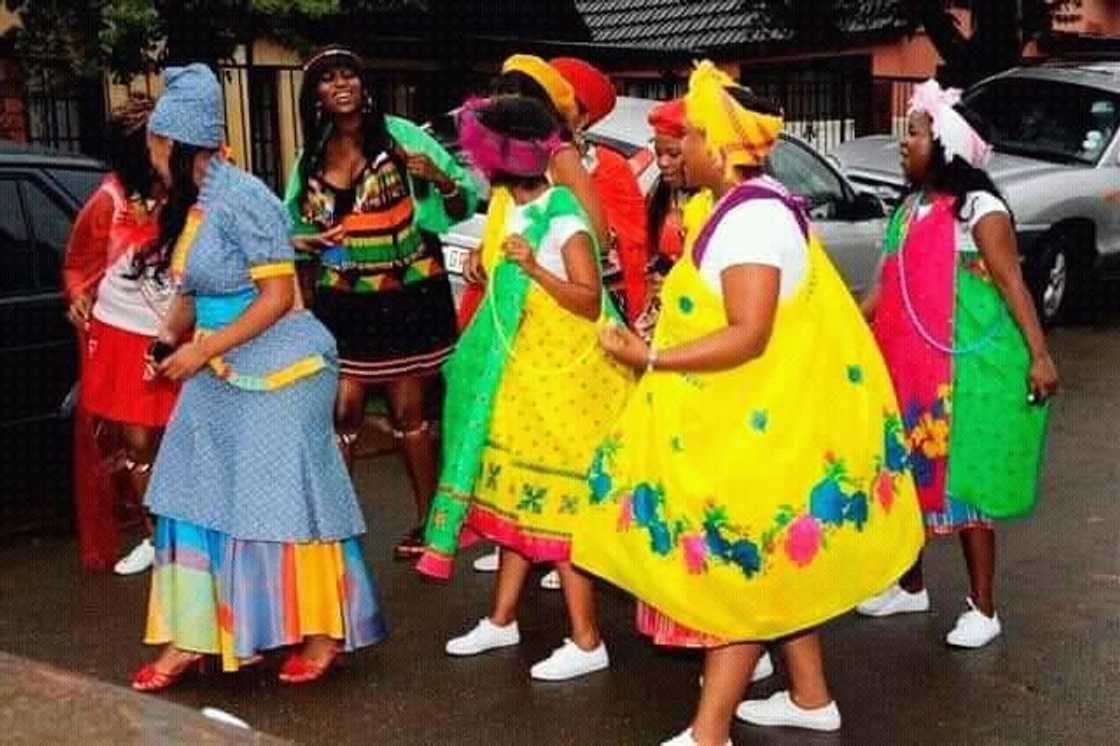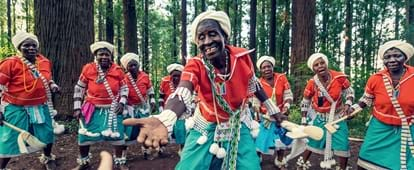What Does South African Culture Today Do?
What Does South African Culture Today Do?
Blog Article
South African Culture Today - The Facts
Table of ContentsSome Of South African Culture TodaySouth African Culture Today Fundamentals ExplainedExcitement About South African Culture TodayHow South African Culture Today can Save You Time, Stress, and Money.The Main Principles Of South African Culture Today 10 Easy Facts About South African Culture Today Described
This adheres to with singing and drum pounding. The couple then consult with the senior citizens and speak about the relevance of their union. A matter of relevance in Zambian towns is the passing away of loved ones. All members of the town placed cash, effort and time together for the burial of the deceased.Songs and dance is a very important element of the Zambian culture. The various tribal units have their own dancing kinds; nonetheless, makishi is usual among all people.
Some Known Details About South African Culture Today
When it comes to songs, drums are made use of the most, with a variety of drumming ceremonies. In Zambia, bulk of individuals are Christian; Protestant and Roman Catholic. There are little teams of Muslims and Hindus, with the remainder adhering to local indigenous tribal ideas.

South African heritage and culture is immensely varied, and is composed of various teams of individuals who each have their very own customs and beliefs. Having such a diversity of people and cultures is what makes South Africa so distinct. In the true sense of the phrase, we are a rainbow nation.
South Africa has around three hundred thousand Portuguese people staying in it. Making it the 7th on the listing of countries with the most Portuguese individuals in it outside of Portugal. Portuguese is not only a culture, yet it is likewise a language and a citizenship. Portuguese individuals stem from the nation of Portugal in Europe, nevertheless, because of Portugal (like numerous other nations in Europe) discovering the globe and dominating other countries throughout the 15th 20th centuries, South Africa has what we call Portuguese South African's living in it.
South African Culture Today Things To Know Before You Buy
Among the noticeable functions of the topography is a plateau that covers virtually two thirds of the facility of the country. The plateau complicated climbs toward the southeast, where it culminates in the Drakensberg range, component of a cliff that separates the plateau from the seaside locations. The Drakensburg includes Sparkling wine Castle, the highest height in the nation.
The region north of the Witwatersrand, called the bushveld, slopes downward from eastern to west towards the Limpopo River, which develops the worldwide boundary. The western section of the plateau, the middleveld, likewise comes down in the direction of the west and varies in altitude in between the highveld and bushveld. In between the Drakensburg and the eastern and southern shoreline, the land comes down to the sea.
Nearer the coast there is a low-lying plain called the eastern lowveld. Southwest of the plateau the nation comes to be gradually a lot more arid, offering way to the hostile desert of the Great Karroo, verged on the east by the lower, much better watered plateau of the Little Karroo. Separating the dry southerly inside from the sandy coastal of the southerly coast and West Cape is one more array, the Langeberg.
More About South African Culture Today
The country's racially, ethnically, and politically separated background has created national and subnational symbols that still function as symbols of the nation, and others icons that are approved only by specific groups. The monuments to white inhabitant occupation and political prominence, such as the Afrikaner Visit This Link Voortrekker ("leader") Monolith in Pretoria and the Rhodes Monument honoring the British colonial empire contractor and Cape prime priest Cecil Rhodes, stay sectarian signs.
The first modern inhabitants were the San ("bushman") hunter-gatherers and the Khoi ("Hottentot") individuals, who herded livestock (South African culture today). The San may have existed for hundreds of years and left evidence of their visibility in thousands of old cave paintings ("rock art"). Bantu-speaking clans that were the ancestors of the Nguni (today's amaZulu, amaXhosa, amaSwazi, and vaTsonga peoples) and Tswana-Sotho language groups (today's Batswana and Southern and Northern Basotho) moved below east Africa as very early as the fifteenth century

Both former republics of the Orange Free State and Transvaal (South African Republic) were established by Afrikaner inhabitants that defeated and dispossessed the Basotho and Batswana. Lesotho would certainly have been by force incorporated into the Orange Free State without the expansion of British protection in 1869. The supreme marriage of the nation arised from the South African War (18991902) between the British and both Afrikaner republics, which reduced the country to spoil at the start of the twentieth century.
Afrikaners historically considered themselves the only real South Africans and, while providing complete citizenship to all residents of European descent, denied that condition to individuals of shade until the autonomous change of 1994. British South Africans retain a sense of cultural and social connection to Great Britain without weakening their identity as South Africans.
Not known Details About South African Culture Today
The diversity and fragmentation within ethnic collections and the balance of tensions between those teams during the twentieth century stopped interethnic civil dispute. While intergroup tensions over resources, privileges, and political prominence stay, those disputes are as likely to match Zulu versus Zulu as Zulu against Xhosa or African against Afrikaner.
From colonial India, British merchants and managers brought the rounded metal decorative roof coverings and slim lace job columns that still symbolize the terraces of cottages in communities and cities throughout the country. Holy places add a crucial architectural aspect also in the smallest towns. Along with the skyrocketing steeples and classic stonework of Afrikaans Dutch Reformed churches, Anglican churches, synagogues, mosques, and Hindu temples supply range to the religious building scene.

Slaughtering and the brewing of typical cereal beer are crucial in securing the involvement and a good reputation of the ancestors who Find Out More are considered the guardians of great lot of money, success, and wellness. Indian neighborhoods maintain their native culinary practices and use them on Islamic and Hindu ritual and ceremonial events. Afrikaners and Coloured people collect at weekend breaks and unique celebrations at multifamily barbecues called braais, where community bonds are enhanced.
Because this was the primary economic business of both black Africans and white homesteaders, problem in between those teams fixated the possession of grazing land and livestock. In 1867, the largest diamond deposits on the planet were discovered at Kimberley in the west central area. The riches from those areas assisted fund the exploitation of his response the greatest gold reef on the planet, which was uncovered on the Witwatersrand in 1886.
A Biased View of South African Culture Today
This caused misunderstandings and purposeful misstatement in the negotiations of white inhabitants and government authorities with African principals during the colonial duration (South African culture today). In the establishment of African reserves, some facets of common and chiefly "tribal trust" land period were protected, and even in white backwoods, forms of public period were still practiced in locations with African areas
After the democratic change of 1994, programs for land restitution, redistribution, and reform were set up, however development has actually been sluggish. The white minority still controls eighty percent of the land. In the wake of farming land invasions in Zimbabwe, the Division of Land Affairs has actually promised to speed up land redistribution.
Report this page